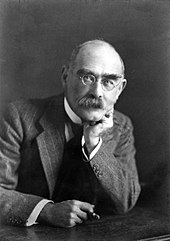
It is a collection of literary works published earlier and has a compiler or an editor who puts them together for republication, often with his/her introduction or foreword and comments. It is an invaluable source to discover a range of writers and a repertoire of their works.
Our English teacher, the other day mentioned that anthologies of any kind are an invaluable source to discover a range of writers and a repertoire of their works, often found to be more useful than a book containing a single work of a single author. For some strange reason, not many readers engage with them. They are of varied kinds such as anthology of poems, short stories, plays, novels, and essays anthology of one writer's works, anthology of theme-based writings, viz. love poems, protest plays anthology of period-based publications, that is, 18th-Century writings modern poetry, post-modem criticisms, and so on. She explained that an anthology is a collection of literary works published earlier and has a compiler or an editor who puts them together for republication, often with his/ her introduction/forward and comments.
The benefit of referring to an anthology is that in just one volume one could access many writers and their representative works. I had seen many anthologies on the shelves but never paid much attention to them. Having been inspired by what my teacher said, 1 wanted to glance through some when I stumbled upon an anthology of essays titled Greatest Essays, I was surprised to find about 50 essays in one book representing almost the same number of essayists from England and America. stretching from the 16th to 20th Centuries. I was surprised by the vast time span.
When I quickly ran my eyes over the table of contents. Some of the titles instantly appealed to me so I decided to read through at least a few. One such was Jonathan Swift's A Meditation upon a Broomstick. As I found the title unusual and ran only about one-and-a-half page. I read it first I was struck by Swifts comparison of man with a broomstick both look good and clean to start with but finally they are thrown out in the garbage or in the fire to be burnt. Man, in the end, seems to be of no more value than a broomstick.
Another title that interested me was Gifts by Ralph Waldo Emerson because we live at a time when the practice of giving and receiving gifts is an integral part of our nature Emerson has a strikingly different viewpoint on gifts a true gift is a portion of thyself: he considers. Therefore the poet brings his poet the shepherd, his lamb; the farmer, com; the miner, a gem: the sailor, coral and shells the painter, his picture. He dismisses rings and other jewels merely as apologies for gifts, but values flowers and fruits as fitting presents. Also, he devalues the practice of choosing gifts from readymade shops, because, to him, they are cold, detached, and impersonal in nature. His views apparently run contrary to the ones during his time and the current practices as well.
I have heard a lot about the Niagara Falls, so when I 1 came across an essay on it by Rupert Brooke, I was motivated to read it. His poetic description of the falls was very impressive, focusing on every minute detail such as the fast flow of water, mass of water, spray, waves, mist, color, foam, rainbow, and so on. He is upset that the beauty of the river is surrounded by every 'distraction, incongruity, and vulgarity, namely, the hotels, trams, stalls, booths, picture post-cards, and so on.
In less than an hour thus I was able to read three different writers on three different aspects with three different styles. The thought that dawned on me, then was that writers often deal with even commonplace things such as gifts broomstick, and waterfalls but what matters most to become a writer is the ability to generate thoughts based on ordinary things and express them imaginatively. I realised that writing need not necessarily be on some obscure profound ideas always. This is in fact motivated me to try my hand at writing sometime soon.
Importantly, anthologies lend themselves to random reading and one hardly needs to read cover to cover: one could pick and choose whatever interests and discard the rest, as I did. As anthologies often consist of renowned authors and their representative writings, the benefits readers reap are immense as they offer a wide variety of themes and styles.
Picture Credit : Google














